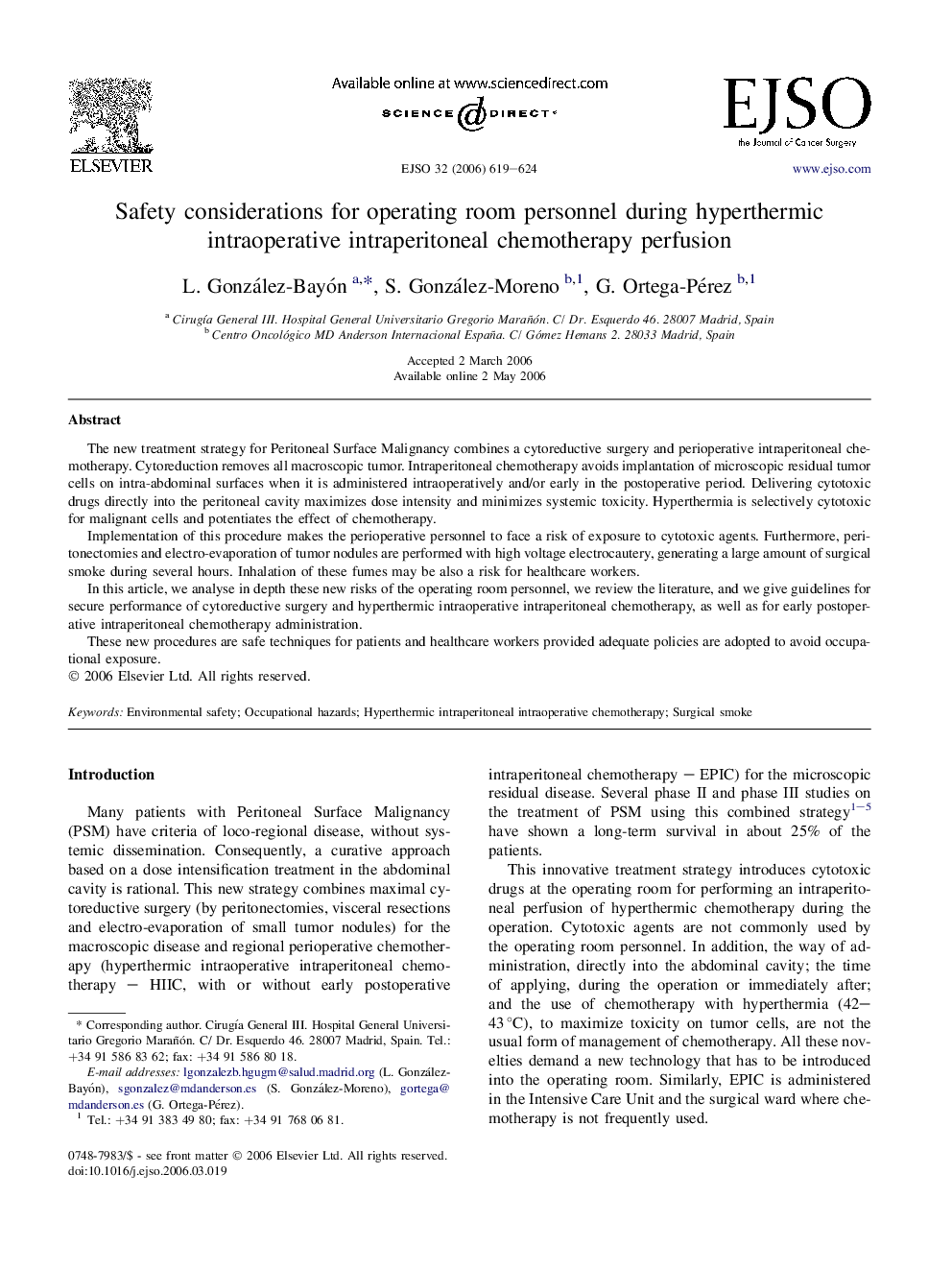| Article ID | Journal | Published Year | Pages | File Type |
|---|---|---|---|---|
| 3988509 | European Journal of Surgical Oncology (EJSO) | 2006 | 6 Pages |
The new treatment strategy for Peritoneal Surface Malignancy combines a cytoreductive surgery and perioperative intraperitoneal chemotherapy. Cytoreduction removes all macroscopic tumor. Intraperitoneal chemotherapy avoids implantation of microscopic residual tumor cells on intra-abdominal surfaces when it is administered intraoperatively and/or early in the postoperative period. Delivering cytotoxic drugs directly into the peritoneal cavity maximizes dose intensity and minimizes systemic toxicity. Hyperthermia is selectively cytotoxic for malignant cells and potentiates the effect of chemotherapy.Implementation of this procedure makes the perioperative personnel to face a risk of exposure to cytotoxic agents. Furthermore, peritonectomies and electro-evaporation of tumor nodules are performed with high voltage electrocautery, generating a large amount of surgical smoke during several hours. Inhalation of these fumes may be also a risk for healthcare workers.In this article, we analyse in depth these new risks of the operating room personnel, we review the literature, and we give guidelines for secure performance of cytoreductive surgery and hyperthermic intraoperative intraperitoneal chemotherapy, as well as for early postoperative intraperitoneal chemotherapy administration.These new procedures are safe techniques for patients and healthcare workers provided adequate policies are adopted to avoid occupational exposure.
